As with other joining hardware (such as cotter pins, screws, and bolts) retaining rings prevent mating components from excessive moving. In short, they create a removable shoulder preventing components from migrating out of proper position during operation. Retaining rings are thin, circular, metal components that can be either stamped from a sheet or coiled from wire.
Retaining ring terminology
Retaining rings are designed to fit into a machined groove either on the inside of a bore or on the outside of a shaft. These components reduce vibration, retain two parts of an assembly, and can withstand axial loading. They are used in assemblies as a cost-saving solution … to avoid machining a shoulder onto a mating component.
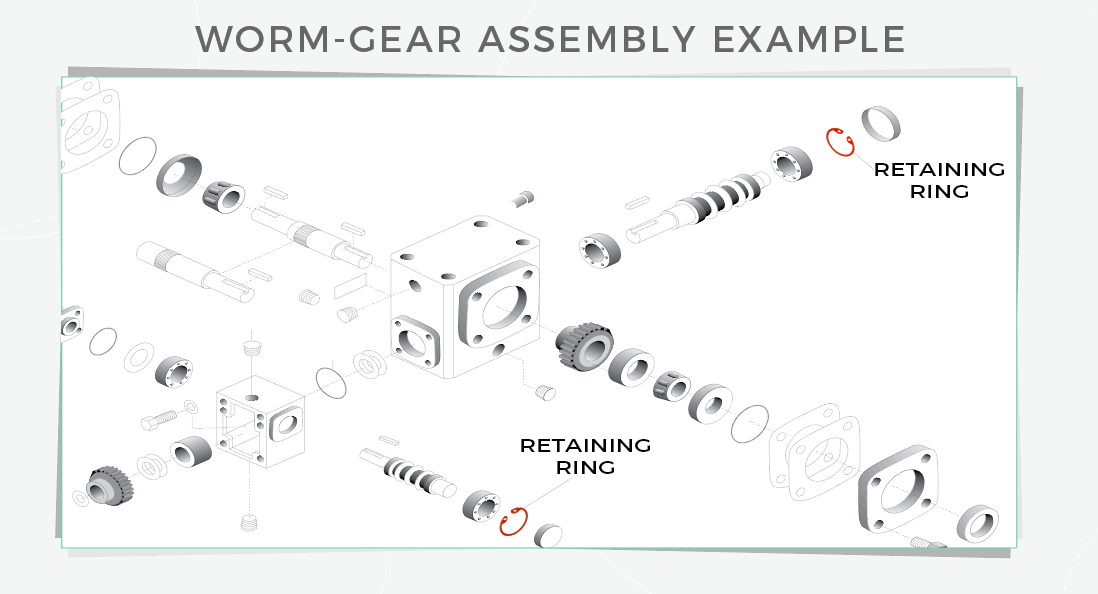
Retaining rings exist in many forms including, stamped, spiral or Spirolox, constant section, hoop, e-clip, beveled, and wave-ring forms.
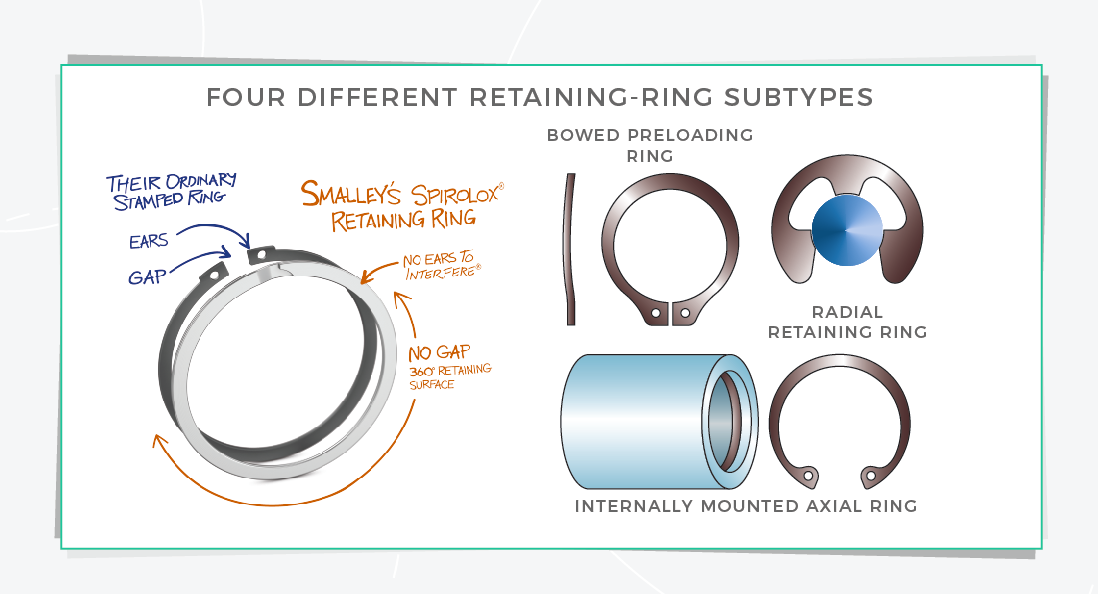
Recognize stamped retaining rings by their ears
Stamped retaining rings are manufactured from sheet metal and feature twin lugs, sometimes called ears. These are the most cost-effective retaining rings when working with small diameters. However, the stamping process generates excess scrap causing them to be less cost effective when working with larger diameters. Stamped rings are installed with the help of a special tool — snap ring pliers. The pliers are inserted into the lugs to separate or compress the ends so the retaining ring can clear the shaft or bore. Stamped rings can replace cotter pins and other traditional fasteners in an array of applications.
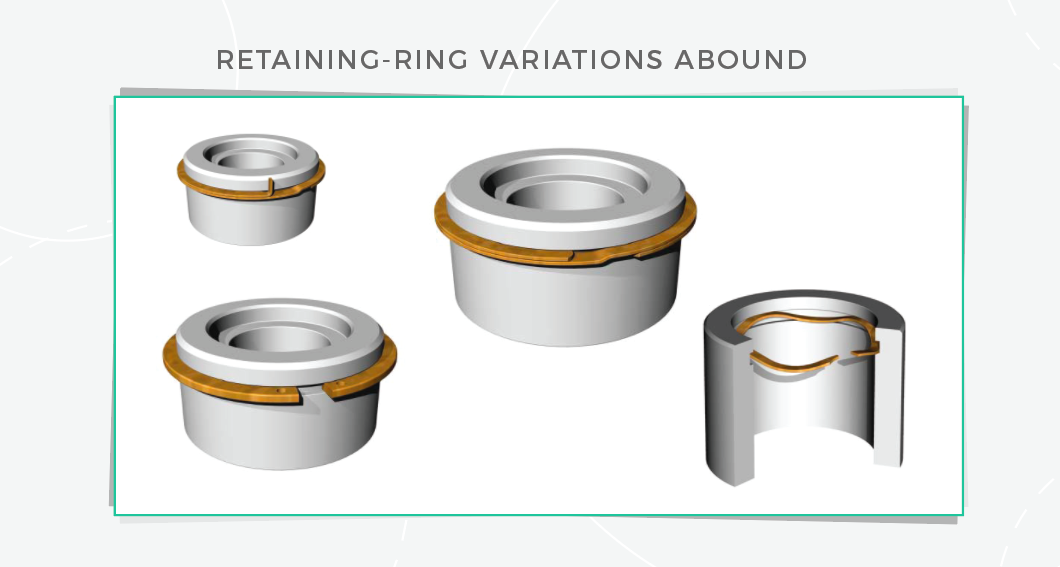
Radial retaining rings — also called e-clips
Another version of stamped rings are e-clips. These rings are installed by pressing them radially onto a shaft groove. This can be a standard shaft or a stepped shaft. Similar to stamped rings, they become less cost effective as the required diameter increases in size. E-clips are used when it is preferable not to slide a ring along the axis of a shaft.
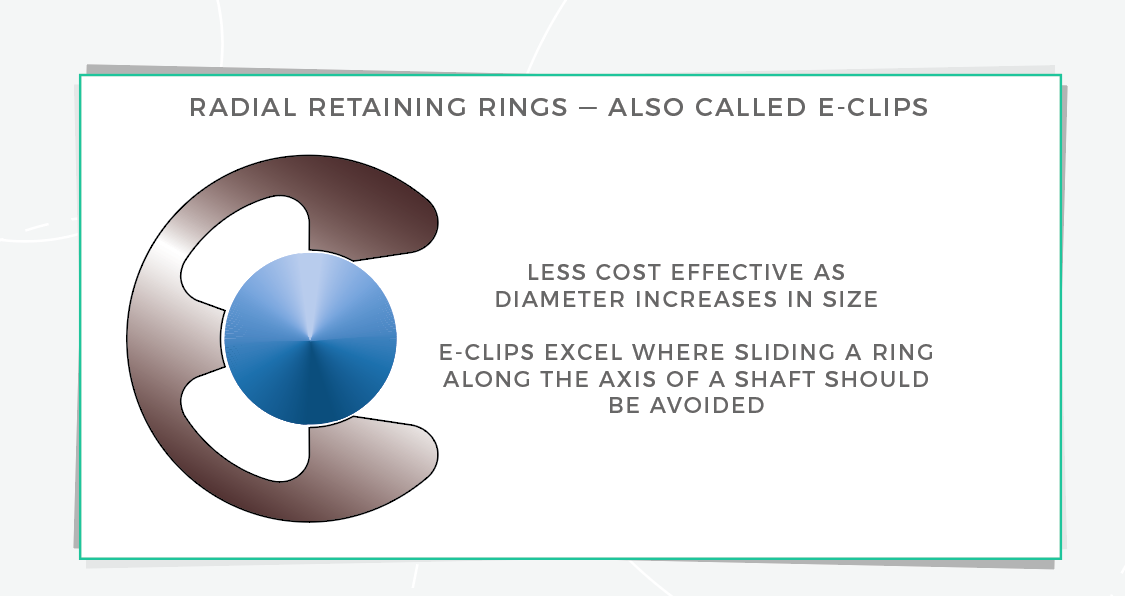
Spiral retaining rings — a cost-effective and reliable option
Retaining rings can also be made from coiled flat wire. These are called spiral rings or Spirolox rings. (Spiralox is a registered trademark of Smalley Steel Ring Co.) Because they are manufactured from wire, there is less scrap — making them more economical at larger diameters or when using stainless steel and exotic alloys. This process is economical when looking for a custom ring because there is no dedicated tooling (such as custom punch and die tooling).
Spiral retaining rings come in single-turn or multi-turn varieties. Multiple turn rings have higher thrust load capacity and feature a 360° retaining surface. The constant cross-section gives spiral retaining rings a lug-free design, making them suitable where available radial space is limited. Because they do not have lugs, snap-ring pliers aren’t needed for installation. Instead spiral rings are wound one turn at a time into a groove. To extract a spiral ring from a groove, there is a removal notch that creates a gap between the end of the ring and the mating component. A blunt object (such as a screwdriver) can be inserted to pry the ring free. A notch at the end of the wire can start unwinding out of the groove for removal. Often a spiral retaining ring will fit interchangeably in a stamped ring groove.
Spiral rings can also be designed to act as an internal and external ring at the same time. This is called an ID-OD lock and permanently fastens two mating components. We see here a Spirolox retaining-ring example from Smalley.
Hoopster constant-section rings
Currently there are two additional types of flat wire rings, hoop rings and constant section rings. Hoop rings feature a narrow radial cross-section and a larger axial cross-section. They are installed into shallow grooves which makes them suitable for thin walled applications. In contrast, a constant-section ring is similar to a traditional spiral ring but is made from wire with a thicker cross-section and square edges. Constant-section rings are used in heavy-duty applications. Traditionally, both hoop rings and constant-section rings are single-turn.
Retaining-ring materials
Retaining rings are available in a diverse range of materials. The material is dictated by the application environment. When the ring is not exposed to corrosive elements, carbon steel is the standard material used. Retaining rings are available in a range of stainless steels if the ring is destined for a corrosive environment. With high-temperatures environments, an exotic alloy may be required. These alloys include, Elgiloy, Hastiloy, and Inconel. Retaining rings can also undergo different types of plating or receive different coatings to withstand harsh environments. Common finishes include, black oxide, cadmium plating, oil dip, passivation, zinc phosphate, vapor degrease (cleaning), and vibrator or hand deburr.
Custom retaining rings
Retaining rings can be customized to application requirements. Traditionally, rings produced from coiling are easier to customize. Often only a simple setup is required (with no tooling) to produce a specific ring. If the application requires a specific end type or configuration, this is easier to produce from a coiled ring than from a stamped ring. Custom rings can be manufactured in sizes from 0.157 in. (or 4 mm) to 120 in. or 3,000 mm in diameter. A custom stamped ring would require and additional set up and die.
Filed Under: Motion Control Tips

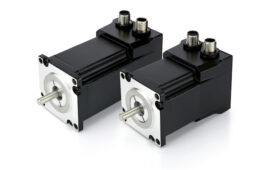
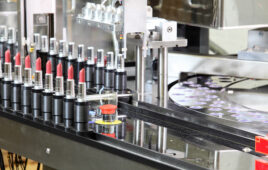
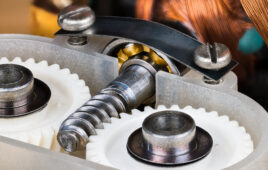

Tell Us What You Think!